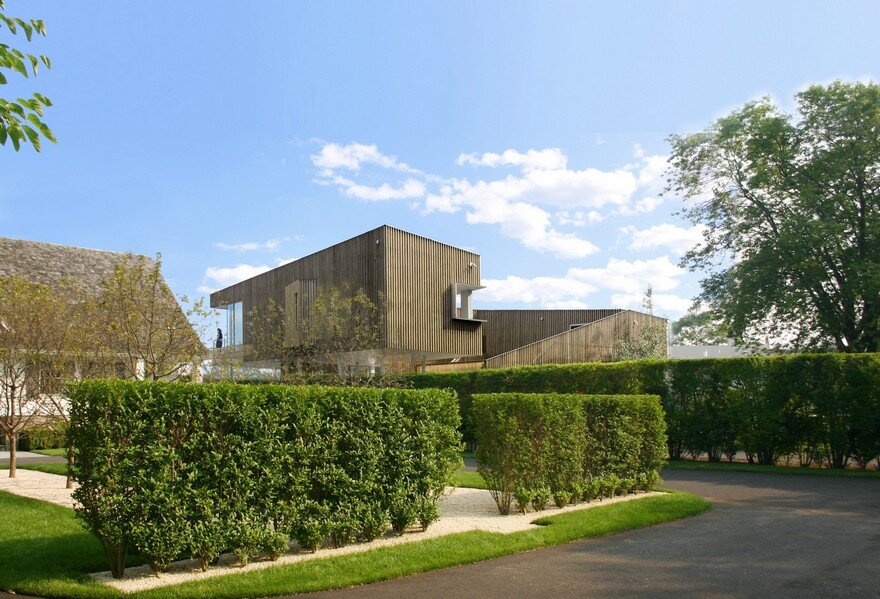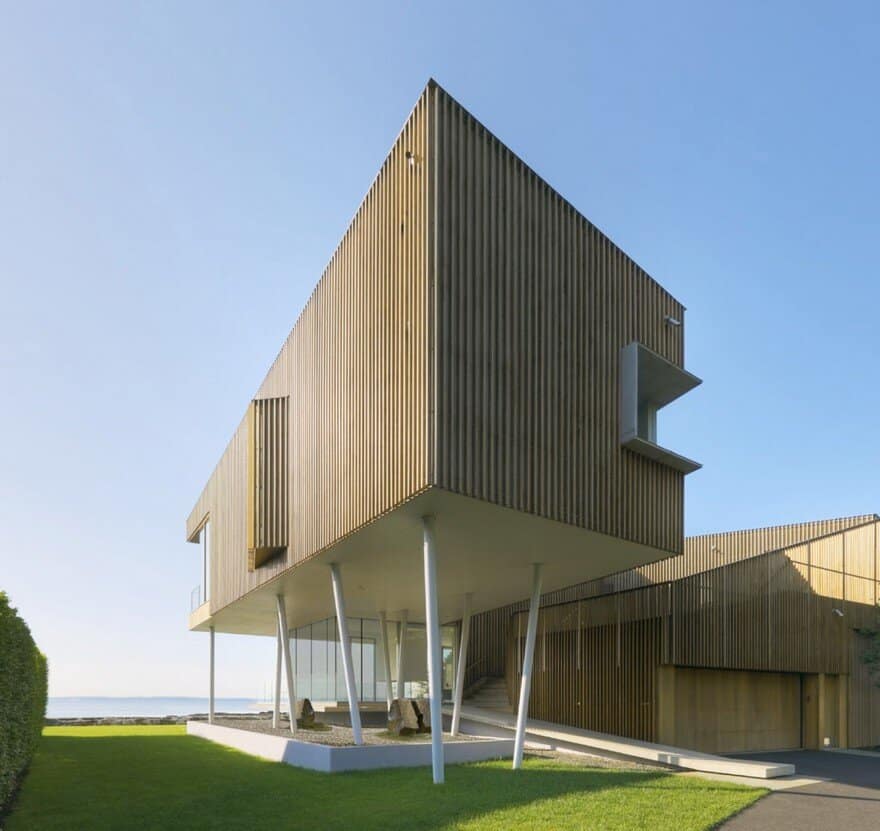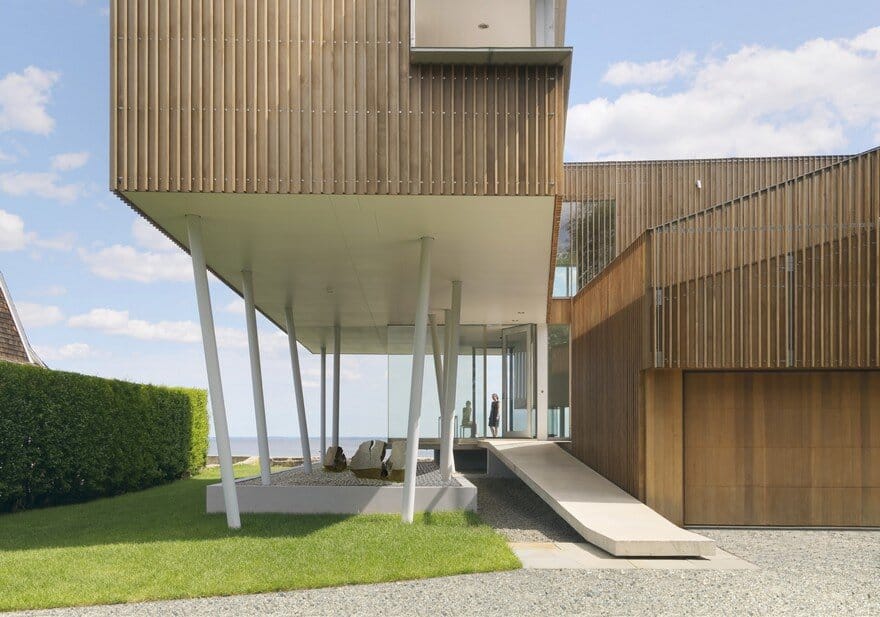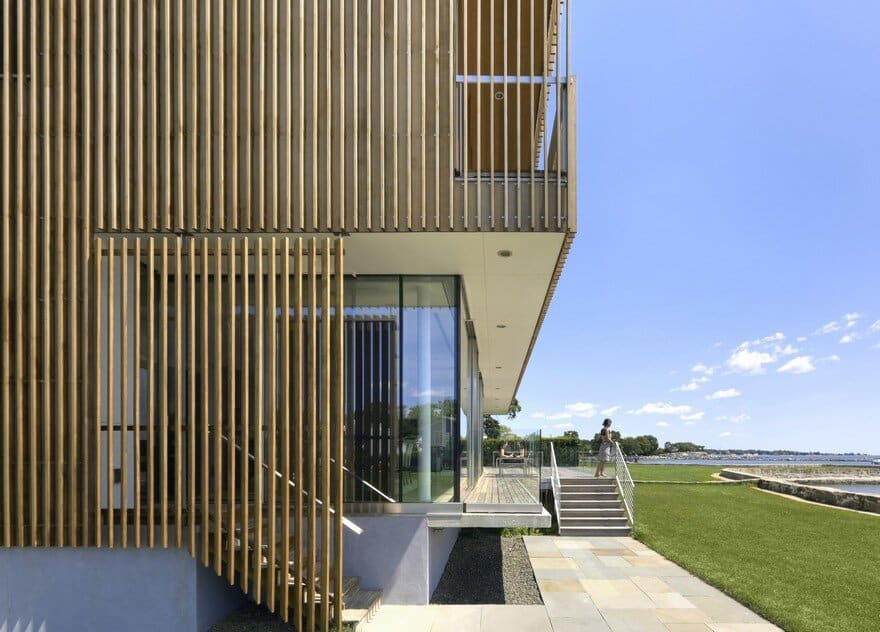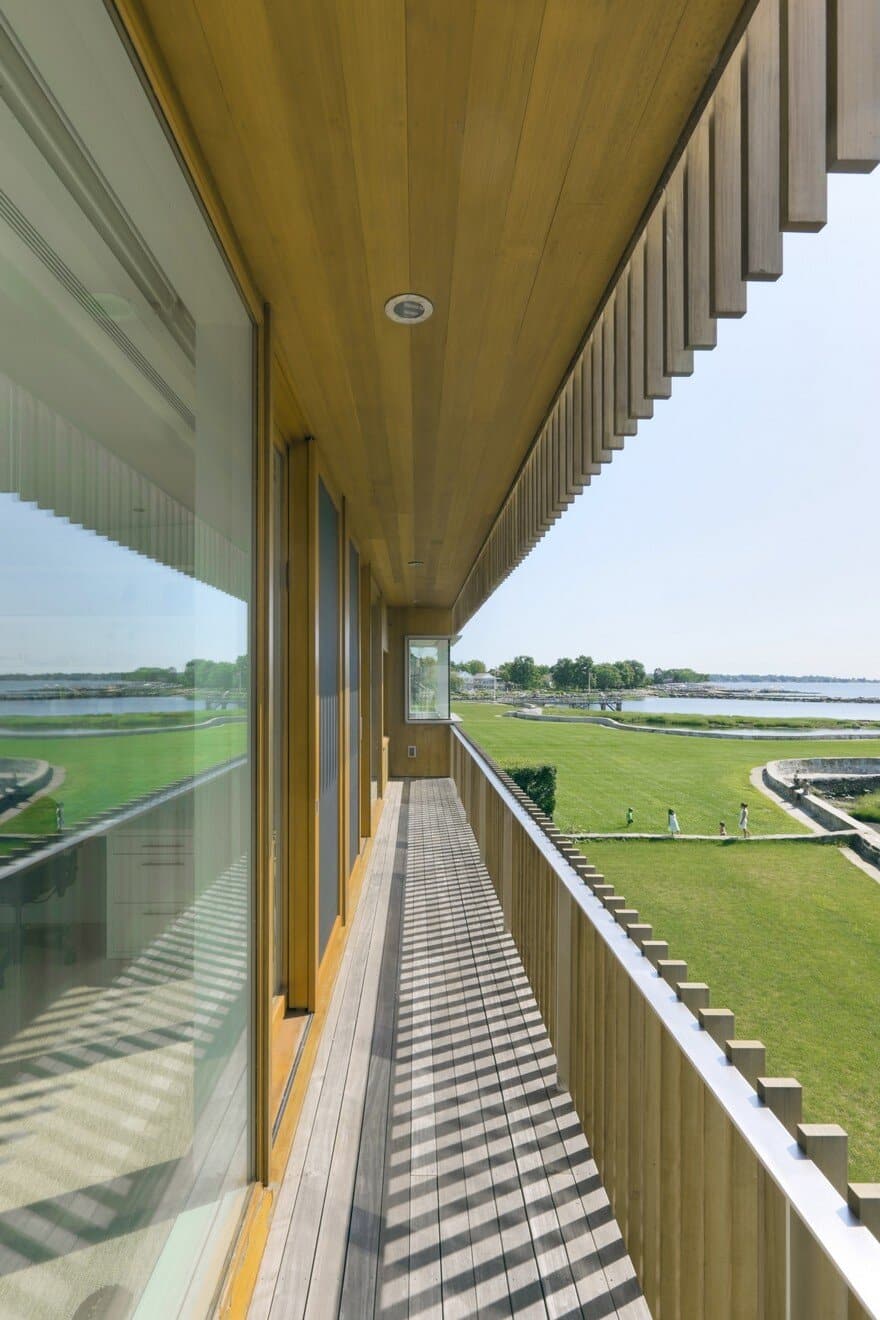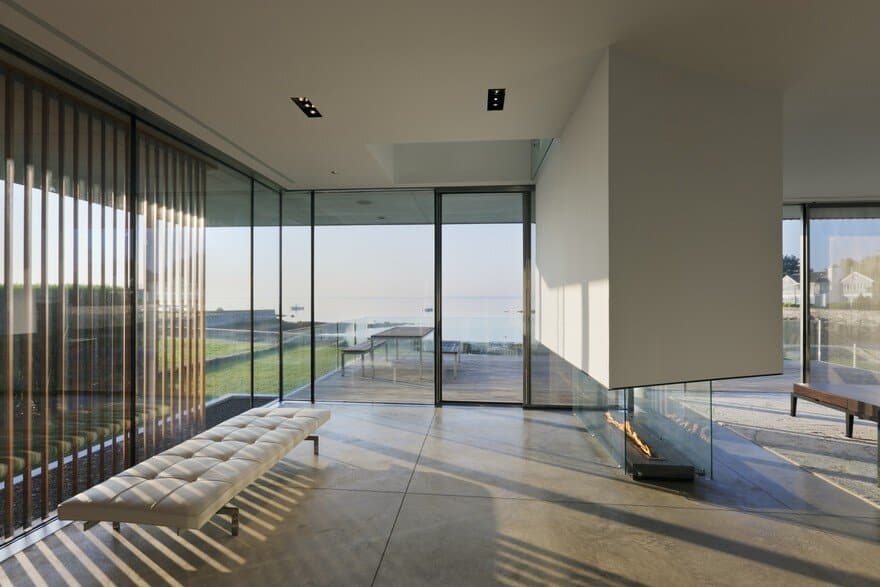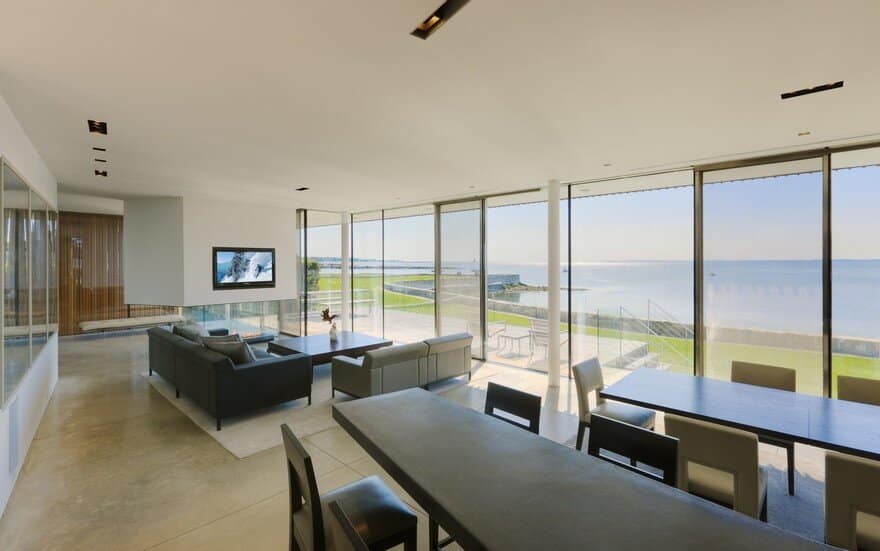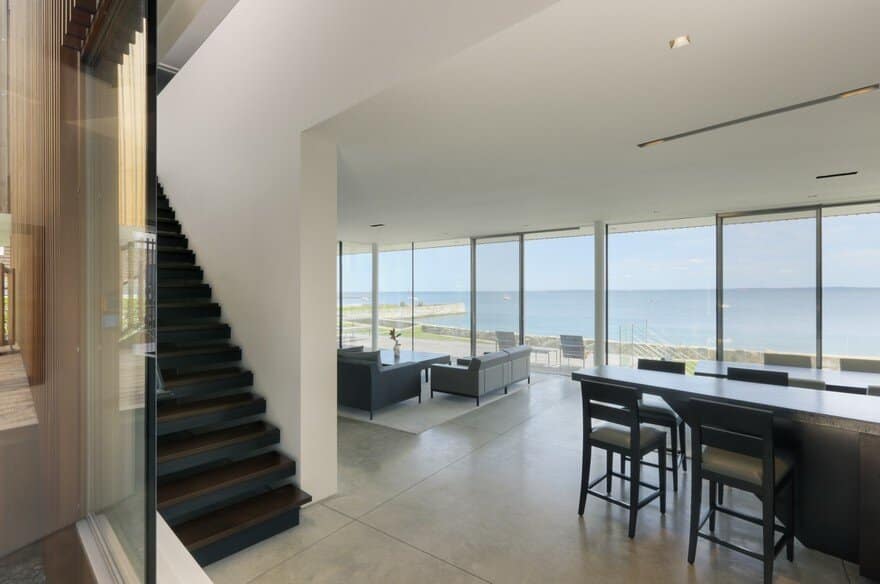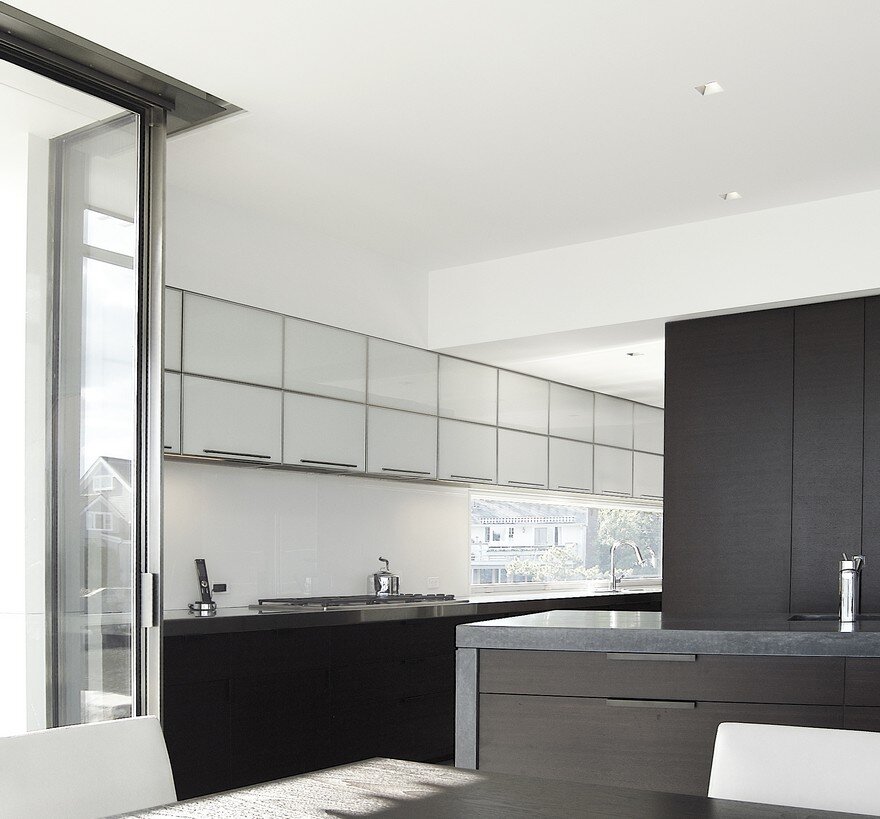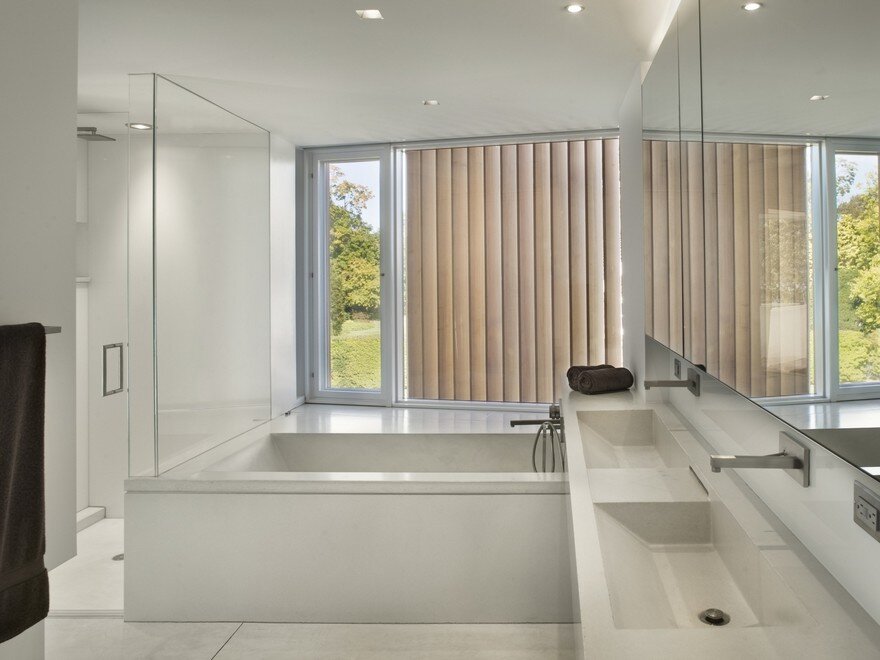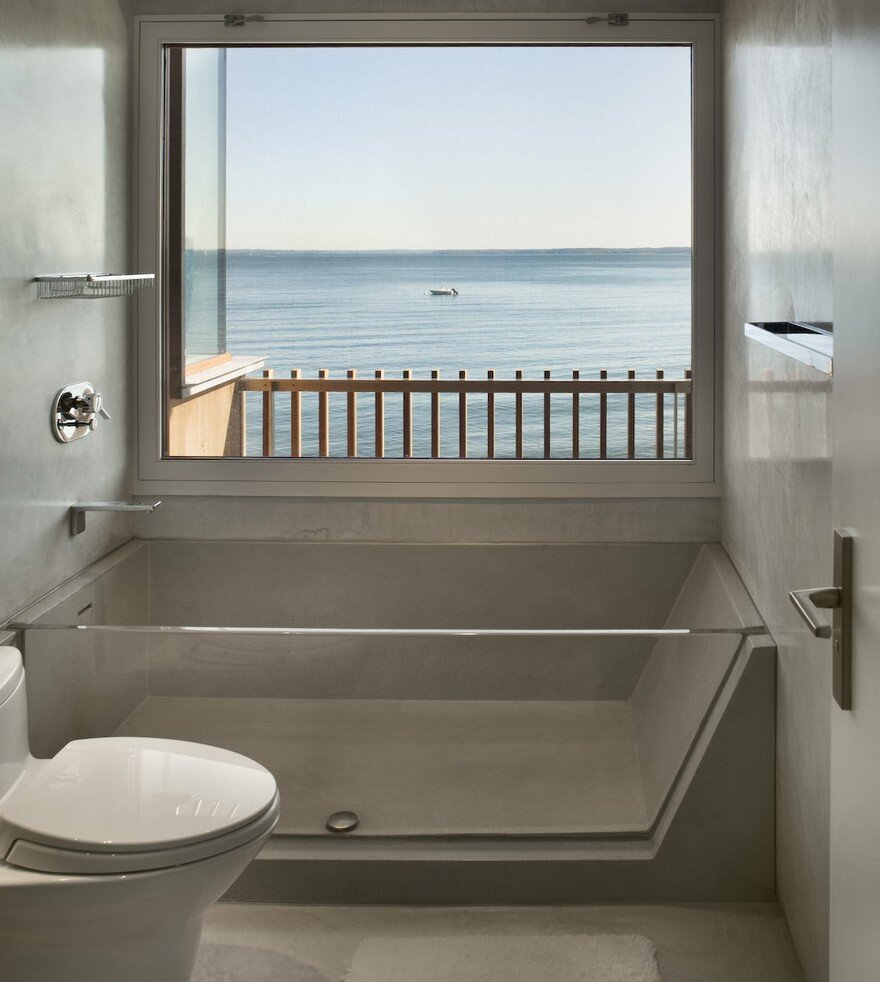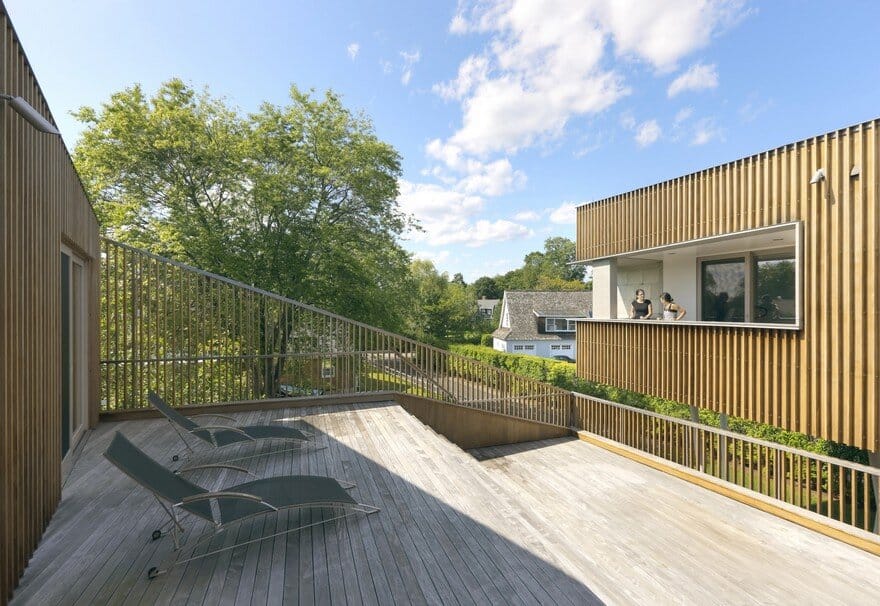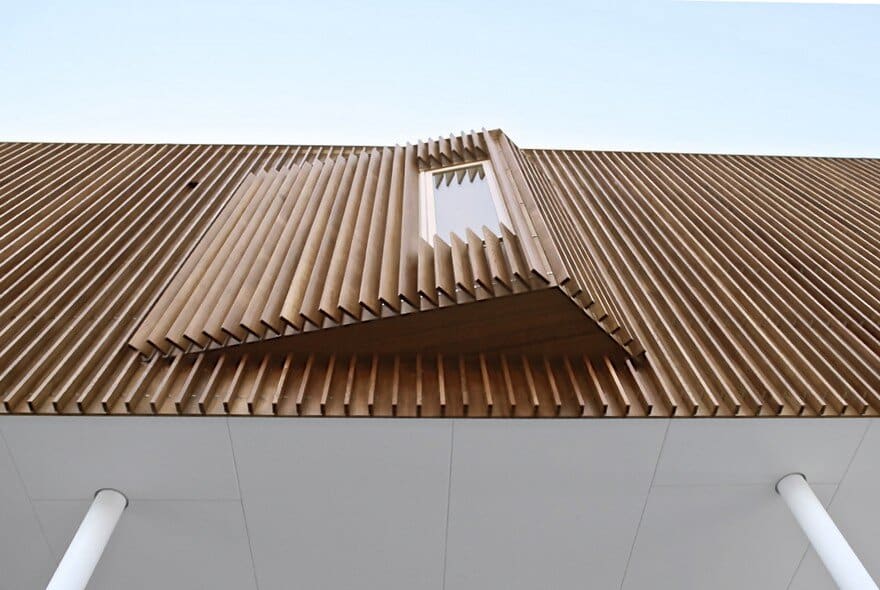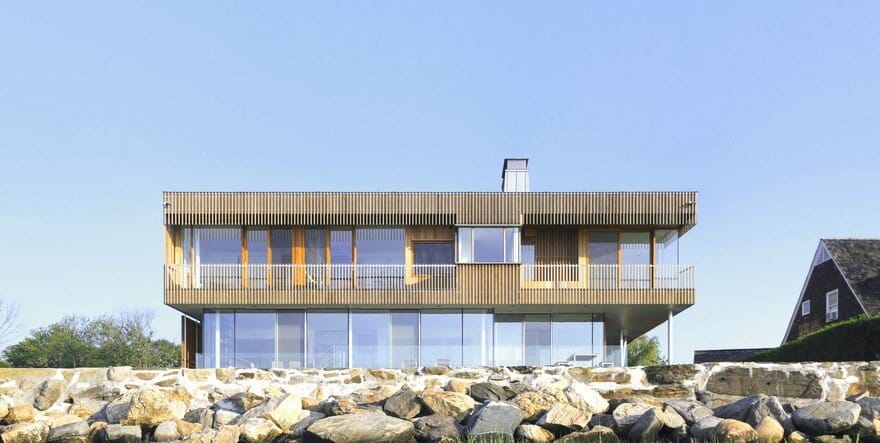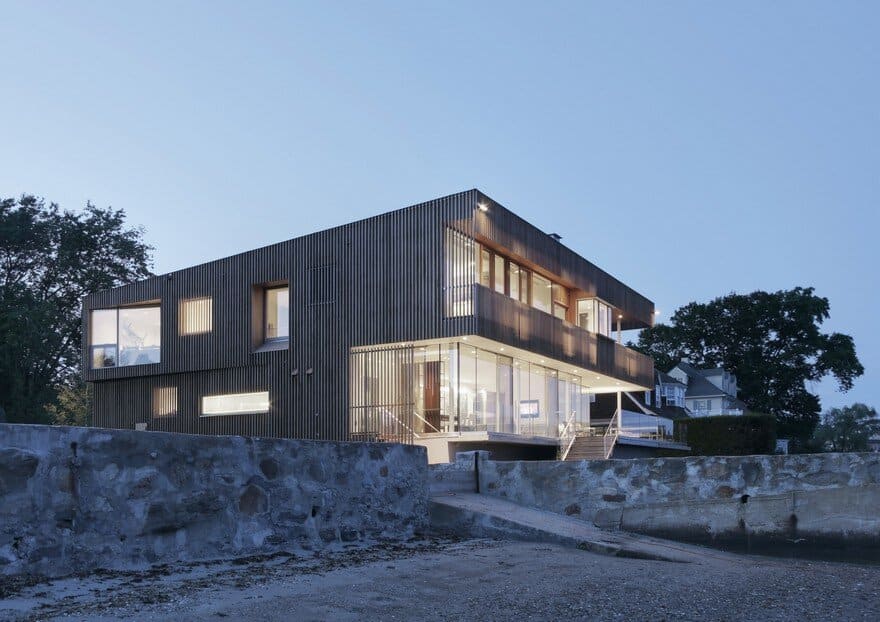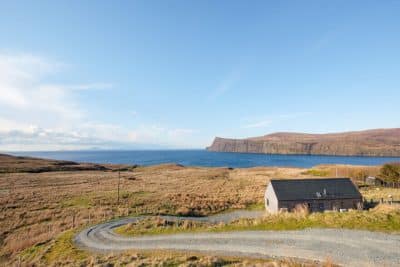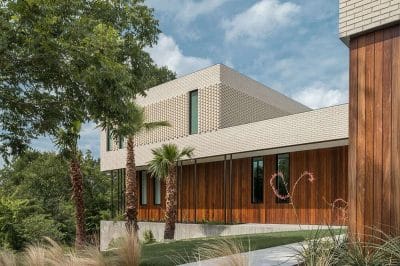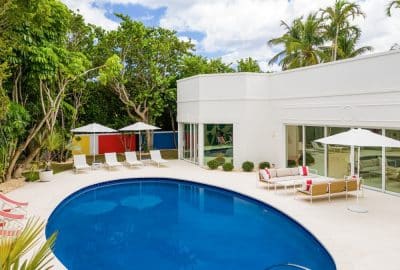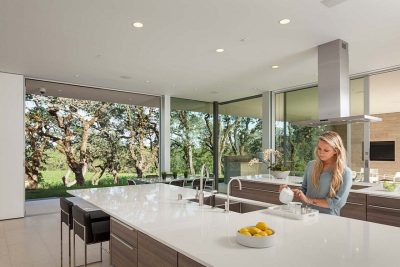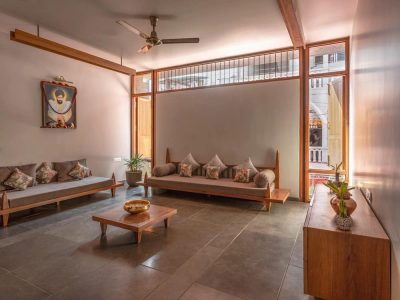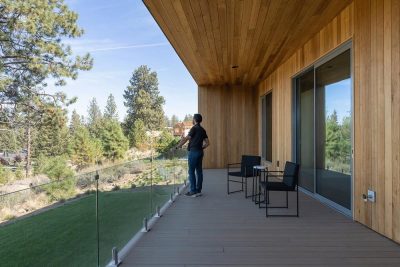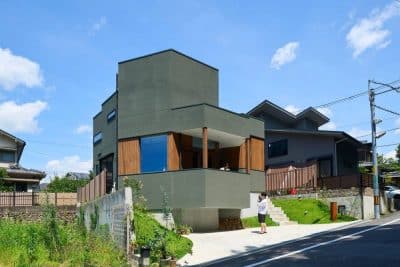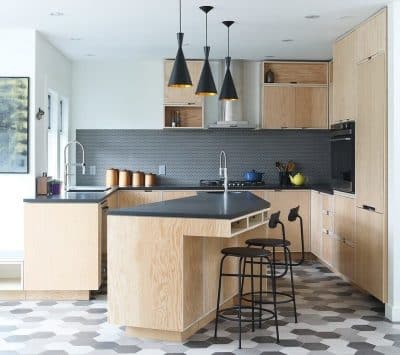Project: Spiral House
Architects: Joeb Moore & Partners
Location: Connecticut, United States
Photography: Jeff Goldberg / ESTO
Situated along the Connecticut shoreline of Long Island Sound, the Spiral House seeks to engage, enhance and reflect the surrounding coastal climate and its atmospherics of light, air, and water. Formally and spatially, the house is a direct and pragmatic response to the strict environmental and local zoning restrictions and regulations imposed on the building and site.
Conceptually, the “house” is the resultant form and operation of an interface and tension between two systems of geometry, one projective (fixed) and the other, radial (dynamic). Through an overlapping system of spatial and geometric progression, growth, and interference, the social-spatial roles of public and private, interior and exterior, house and landscape are intimately connected and entwined. Yet they are also left curiously open-ended and indeterminate, much like the water itself.
The coastal landscape is one of mist, reflection, and indistinctness. Sometimes fierce and turbulent, and sometimes, calm and gentle. Things appear to constantly change, fade or drift away. We sought material and formal operations that might mirror and even celebrate this atmospheric ontology of the sea and its operatic arrangements of light, air, and water. We selected cedar wood siding, large panel glass window/door systems to promote extraordinary views of Long Island Sound and concrete for its durability and resistance to coastal New England storm surges. The contrast between the spiral wood structure, its vertical wood-fin skin, against the concrete plinth and ramp, and the 11’ tall transparent/reflective glass curtain wall system sandwiched between all combine to produce a rich and complex range of shifting perceptual effects that again mirror and re-present the house within the context of the coastal surroundings and atmosphere.
An example of this strategy at the micro-tectonic level, where we blur the perceptual boundary between building and environment, is the vertical cedar batten/louver system designed for the skin of the wood structure of the building. A system of 3/4” x 3-1/2” vertical red-cedar wood fins with stainless steel clips and trim emerged as a material/tectonic detail and formal/spatial device to unify the disparate parts and elevations of the building but also as a technique to accentuate and amplify the temporal, diaphanous, ”moiré” effects of sky, water, and building to produce both literal and phenomenological transparency. It is an extraordinary and constantly changing experience on the site, a spatial-temporal kaleidoscope that has its center in the house itself.

